SBI Clerk Exam is an amazing opportunity for all the banking aspirants. SBI Clerk Exam is one of the most popular exams in the banking sector. SBI Clerk Prelims exam schedule on tentatively February/March 2020. Today we will be providing you Quant Daily Mock on- Caselet. For more preparation, you can also follow the SBI Clerk Study Plan for prelims which is provided on bankersadda.
Directions (1-6): Read the passage given below and answer the following questions.
There are some data given by a college campus of total 150 students. 30 students like English, 50 students like Math and 40 students like Science. 5 students like both English and Math but not Science, 20 students like both Math and Science but not English and 10 students like both Science and English but not Math. 5 students like all three subjects. Rest of the students like none of three subjects.
Q1. Number of students who like only English is what percentage more than that of students who likes only Science?
(a) 125%
(b) 100%
(c) 50%
(d) 200%
(e) 150%
Q2. Find out the ratio of number of students who like all the subjects to who don’t like any subjects?
(a) 1:6
(b) 6:1
(c) 1:15
(d) 2:5
(e) 1:3
Q3. Find out the total number of students who likes only two subjects?
(a) 28
(b) 15
(c) 25
(d) 45
(e) 35
Q4. What is the ratio of number of students who don’t like math to who like math as a subject?
(a) 5:1
(b) 2:1
(c) 3:1
(d) 1:2
(e) 1:5
Q5. If students who like math increased by 20% when students who don’t like any of three subjects starts liking math, then find out the total number of students who like math is what percentage of total students in the college?
(a) 36%
(b) 40%
(c) 56%
(d) 28%
(e) 60%
Q6. Find out the average number of students who like only math and who like Science?
(a) 60
(b) 50
(c) 40
(d) 30
(e) 55
Directions (7-10): Read the passage given below and answer the following questions. In a market there are six types of articles, i.e, ( A, B , C , D , E and F) in same quantity but price of each type of articles is different. If price of each article of A is 50% less than of price of each article of B and 60% less than price of each article of E. Whereas the price of each article of E is same as the quantity of all article of A.
Ratio of price of all articles of B to the that of D is 4:3. Numerical quantity of price of each article of C is 20 more than total quantity of articles in C. The price of each article of F is 20% more than that of E and ratio of price of C to D is 7:3.
Q7. Find the average price of each items of A, C & D in the market?
(a) Rs. 60
(b) Rs. 30
(c) Rs. 50
(d) Rs. 40
(e) Rs. 120
Q8. If article A , B and E is sold at 20% less, 10% more and 20% less respectively, then find out the ratio of initial average price to new average price of the same articles?
(a) 10:9
(b) 6:7
(c) 5:6
(d) 8:7
(e) 11:10
Q9. Find out the price of each article of F is what percent more than quantity of article F?
(a) 15%
(b) 20%
(c) 25%
(d) 22.5%
(e) 17.5%
Q10. Find out the average price of each article of cheapest item and most expensive article?
(a) 45
(b) 35
(c) 30
(d) 25
(e) 40
Directions (11-15): Read the passage given below and answer the following questions.
A shopkeeper sells five articles – A, B, C, D & E. Ratio of cost price of article-A to article-B to article-C is 5 : 7 : 3. Cost price of article-D is 60% less than that of article-A and cost price of article-E is equal to the sum of cost price of article-B & C. Average cost price of these five articles is Rs.540.
Q11. Find the ratio of cost price of article-A & E together to cost price of article-B & C together.
(a) 3 : 5
(b) 5 : 3
(c) 2 : 3
(d) 3 : 2
(e) None of the above.
Q12. If on selling article-C shopkeeper earned Rs.15 and he allows 25% discount on the marked price, then find marked price of article-C is what percent of cost price of article-D.
(a) 210%
(b) 160%
(c) 190%
(d) 240%
(e) 200%
Q13. If selling price of article-B & D together is Rs.1030 and shopkeeper earns 20% profit on article-B and allows 24% discount on article-D, then find difference between selling price of article-B & marked price of article-D.
(a) Rs.320
(b) Rs.450
(c) Rs.370
(d) Rs.250
(e) Rs.590
Q14. If average marked price of article-B, D & E is Rs.800 and shopkeeper marks article-B & D, 50% and 25% respectively above cost price and incurs a loss of Rs.230 on article-E, then find discount % allowed by shopkeeper on article-E.
(a) 30%
(b) 25%
(c) 20%
(d) 35%
(e) 15%
Q15. If shopkeeper allows 25% discount on article-A and marks up the article-A 60% above the cost price of article-A, then find the ratio of discount allowed on article-A to profit/loss incurred on article-A.
(a) 3 : 4
(b) 1 : 2
(c) 2 : 1
(d) 4 : 3
(e) None of the above.
Solutions
Sol.(1-6)
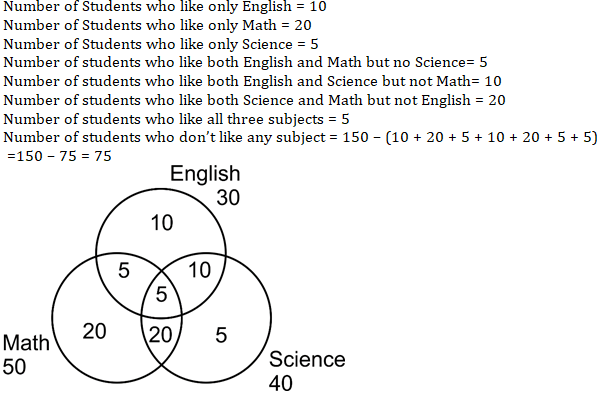
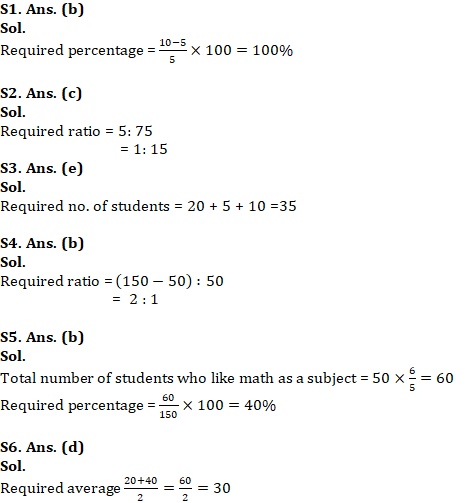
Sol.(7-10)
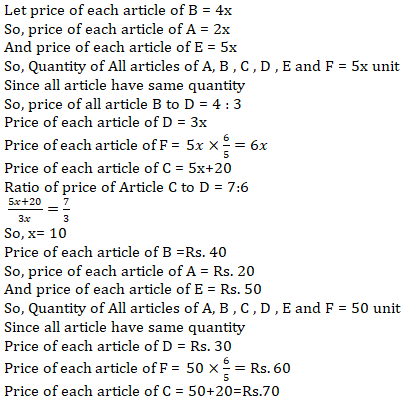
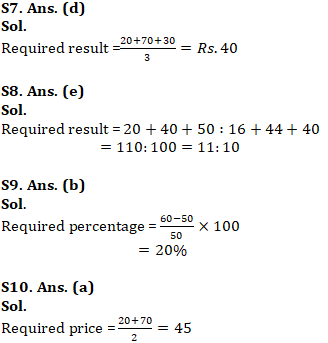
Sol.(11-15)
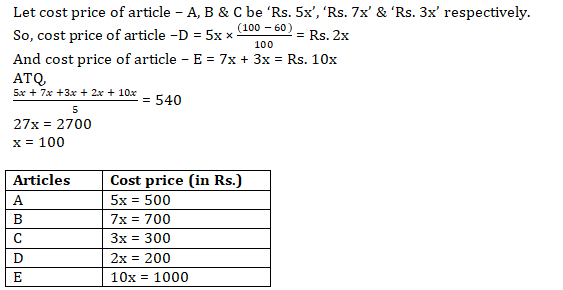
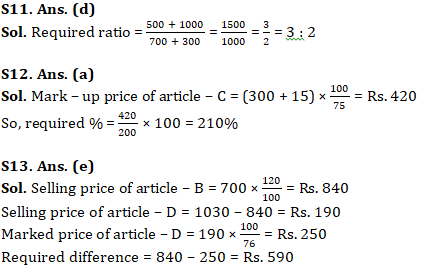
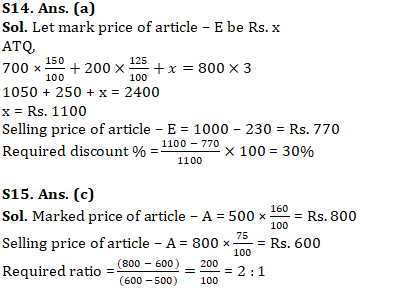
SBI Clerk 2019 | Quadratic Equation | Quant Class for SBI Clerk Pre Preparation 2019
You may also like to read:
- Quantitative Aptitude Quiz for Upcoming Exams
- Quantitative Aptitude Notes and Tricks for Upcoming Exams
Register here to get study materials and regular updates!!
Practice with Crash Course and Online Test Series for SBI Clerk prelims
SBI Clerk Mock Test Online Test Series
SBI Clerk Prelims 2020 Video Course
All the Best BA’ians for SBI Clerk Prelims!!

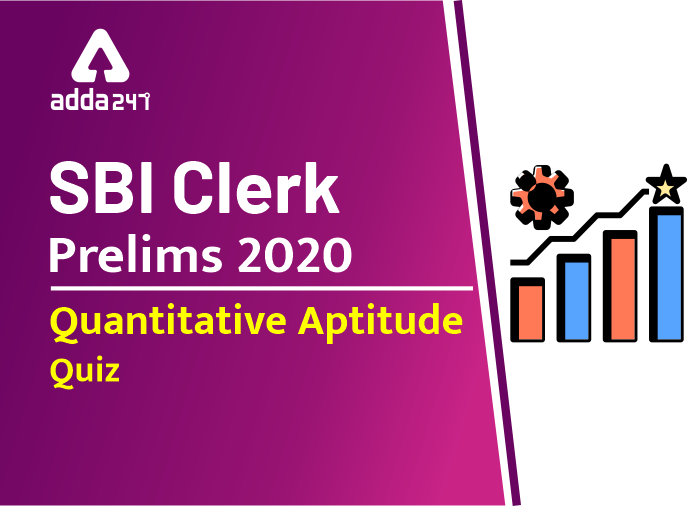

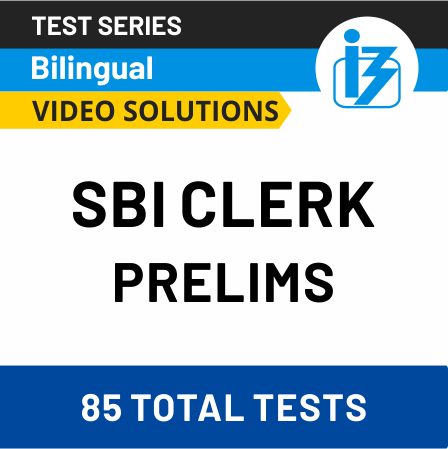

 GA Capsule for SBI Clerk Mains 2025, Dow...
GA Capsule for SBI Clerk Mains 2025, Dow...
 The Hindu Review October 2022: Download ...
The Hindu Review October 2022: Download ...
 ECGC PO Scorecard 2025 Out, Check Marks
ECGC PO Scorecard 2025 Out, Check Marks




